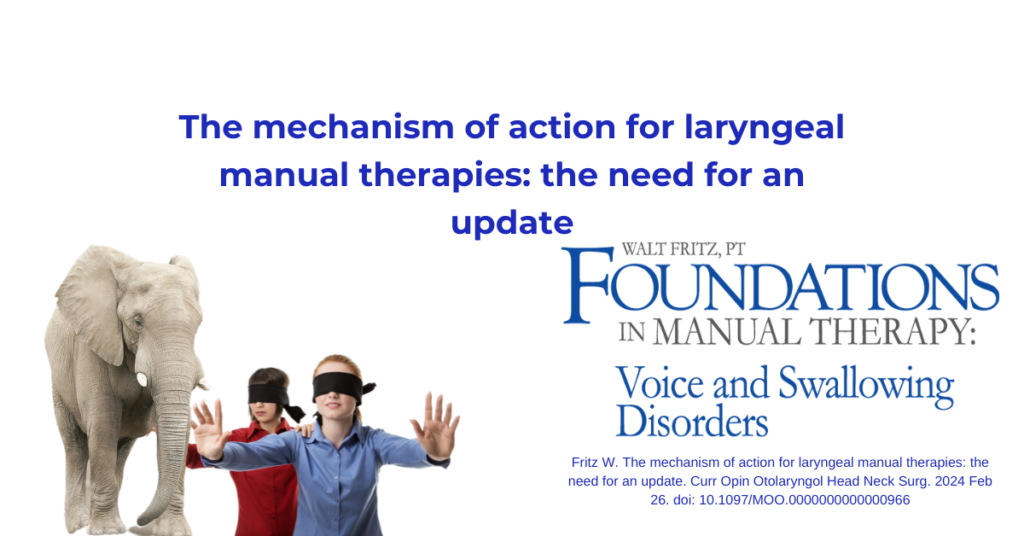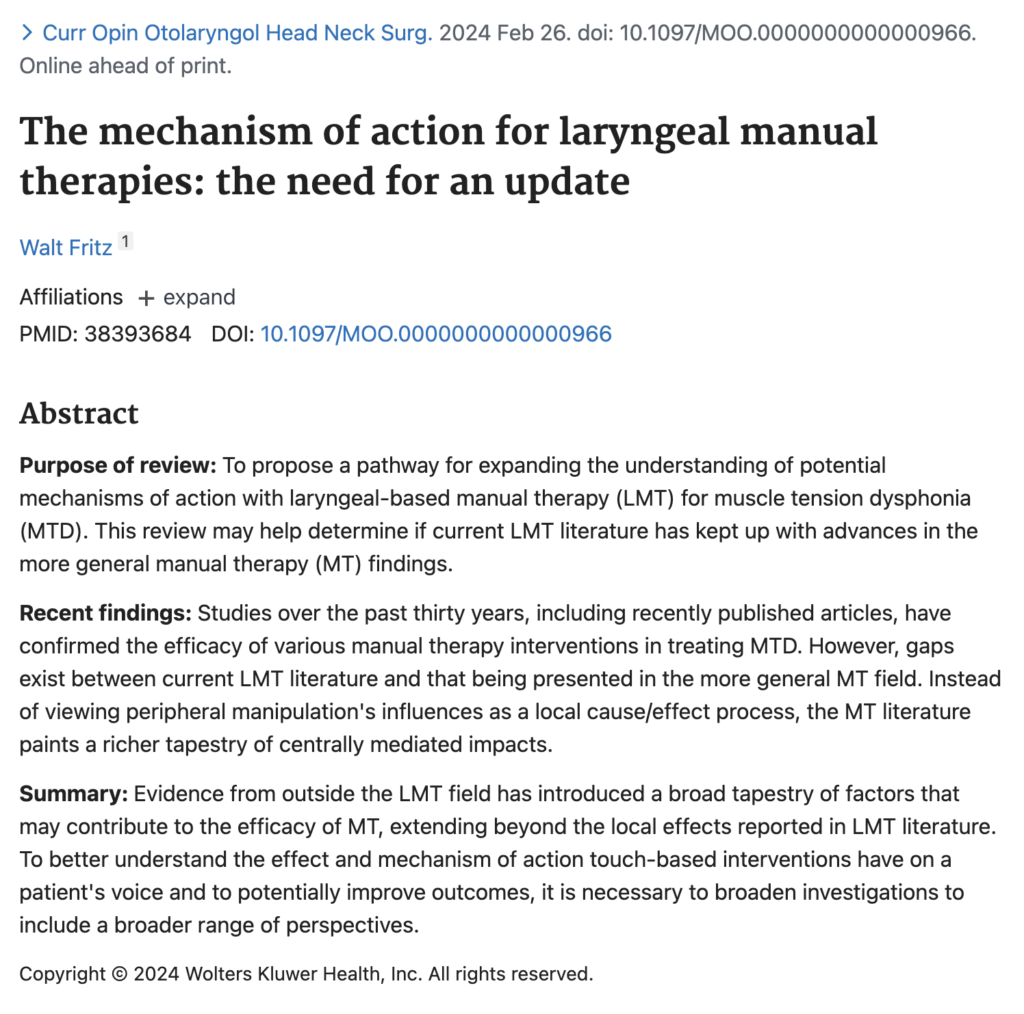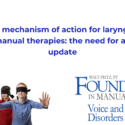
The mechanism of action for laryngeal manual therapies: the need for an update.
In general, laryngeal manual therapies and manual therapy models tend towards narrow explanatory perspectives. Yet the various touch styles involved with such therapies have not been proven to be more than nonspecific. Having been taught through a modality that claims to target a single structure/tissue (fascia or connective tissue), I saw all problems as fascial ones and all interventions as having exclusive domain over those tissues. Such is the case for the various styles of laryngeal manual therapy. Can we choose one tissue to treat to the exclusion of all others? Many believe so, but many others and I disagree.
The ancient Indian parable of the Blind Men and the Elephant tells the story of a group of blind men coming across an elephant. Each uses their touch to explore the animal, but the range of each person’s exploration is limited to select parts of the elephant. When discussing their findings, arguments ensue, as each person’s narrowed range of exploration resulted in different observations and conclusions on the makeup of the beast. “The moral of the parable is that humans tend to claim absolute truth based on their limited, subjective experience as they ignore other people’s limited, subjective experiences which may be equally true.”1
Being involved in manual therapy interventions for over thirty years, I’ve witnessed the parable come to life. Each model and modality claims domain over specific tissues, structures, and pathologies, even supplying evidence they feel sufficiently supports their claims and outcomes. But when viewed from afar, clinicians are all performing relatively equal tasks. This difficulty is the topic of my recent article published in Current Opinion in Otolaryngology and Head & Neck Surgery, The mechanism of action for laryngeal manual therapies: the need for an update2. While it is doubtful this one article will change the entire industries of manual therapy education, both from within the laryngeal manual therapy field or outside, I hope it acts as a springboard for those researching these therapies to look beyond their traditional field of vision. If we see that our touch is impactful in many ways, we may begin to broaden our models to better leverage and respect those factors.
When writing the article, keeping under a limited word count limit was difficult, as there is so much to say about this topic. How touch impacts laryngeal problems, or more general body-wide problems, is complex and nuanced.
Walt Fritz, PT
www.WaltFritz.com
- https://en.wikipedia.org/wiki/Blind_men_and_an_elephant
2. Fritz W. The mechanism of action for laryngeal manual therapies: the need for an update. Curr Opin Otolaryngol Head Neck Surg. 2024 Feb 26. doi: 10.1097/MOO.0000000000000966. Epub ahead of print. PMID: 38393684.



Sorry, comments are closed for this post.